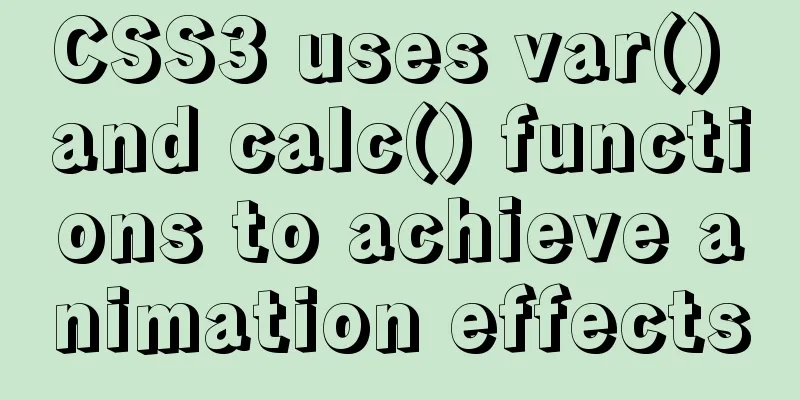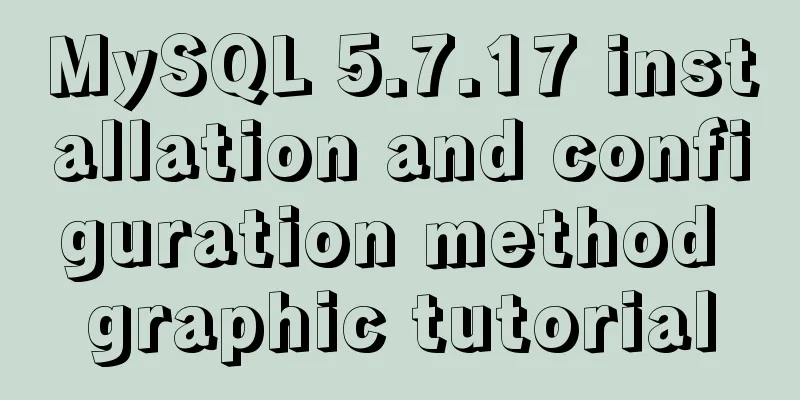Tips for implementing multiple borders in CSS

1. Multiple borders[1] Background: box-shadow, outline 1. Box-shadow solutionIdea: Use the size of the fourth parameter (expansion radius) of box-shadow, multiple projection code example:
<div class="border-multiple">
Multiple border implementation solution 1: box-shadow
</div>
.border-multiple {
margin: 50px auto;
padding: 20px;
width: 600px;
background-color: #fff;
box-shadow: 0 0 0 10px #f0f,
0 0 0 15px #00f,
0 2px 15px 15px rgba( 0, 0, 0, .8);
}
Multiple borders--box-shadow summary: 1. Shadows do not affect layout and are not affected by box-sizing 2. Outline solutionCode example:
<div class="border-outline">
Multiple border implementation solution 2: outline
</div>
.border-outline {
margin: 200px auto;
padding: 20px;
width: 600px;
background-color: #ff0;
outline: 3px dashed #0f0;
outline-offset: -10px;
}
Multiple borders – outline summary: 1. The premise is to achieve two layers of borders 2. Rounded corners of borders[2] Background: box-shadow, outline
<div class="inner-rounding">
Need to use box-shadow, outline, "multiple borders" to achieve Note: The extension radius of box-shadow should be 0.5 times the radius of the corner</div>
.inner-rounding {
background-color: #ccc;
margin: 50px auto;
padding: 20px;
width: 600px;
padding: 20px;
border-radius: 20px;
box-shadow: 0 0 0 10px #f00;
outline: 10px solid #f00;
}Note: The extension radius of box-shadow should be 0.5 times the radius of the corners; strictly speaking, it should be (√2 - 1) times, and 0.5 is taken here for better calculation
Border inner corners 3. Translucent border[3] Background knowledge: rgba or hsla color attributes, background-clip
<div class="border-opacity">
Implementation of semi-transparent border</div>
.border-opacity {
margin: 50px auto;
padding: 20px;
width: 600px;
border: 10px solid hsla(0, 0%, 100%, 0.5);
background-color: #fff;
background-clip: padding-box;
}summary: The implementation of the semi-transparent border requires the use of the background-clip property of CSS3
Translucent border effect diagram 4. Continuous Image Borders[4] Background knowledge: CSS gradient, basic border-iamge, background-clip
<p class="border-image">The implementation principle of border-image is the nine-grid expansion method: cut the image into nine pieces, and then apply them to the corresponding edges and corners of the element border. </p>
<p class="border-image">We don't want a specific part of the image to be fixed at the corner; instead, we want the image area that appears at the corner to change as the width, height, and border thickness of the element change. </p>
.border-image {
border: 40px solid transparent;
border-image: 33.334% url("http://csssecrets.io/images/stone-art.jpg");
padding: 1em;
max-width: 20em;
font: 130%/1.6 Baskerville, Palatino, serif;
}
.border-image:nth-child(2) {
margin-top: 1em;
border-image-repeat: round;
}
Border-image effect diagram Disadvantages: We don’t want a specific part of the image to be fixed at the corner; instead, we want the image area that appears at the corner to change with the width, height, and border thickness of the element. Code example:
<p class="contituous-images">Implementation ideas:
1. Use CSS gradients and background extensions 2. Overlay a pure white solid color background on the background image 3. In order to allow the lower background to show through the border area, you need to specify different background-clip values for the two backgrounds 4. Set the background color at the bottom of the multiple backgrounds. You need to use a CSS gradient from white to white to simulate the effect of a pure white solid color background</p>
.contituous-images {
padding: 1em;
border: 1em solid transparent;
/* background: linear-gradient(white, white),
url(http://csssecrets.io/images/stone-art.jpg);
background-size: cover;
background-clip: padding-box, border-box;
background-origin: border-box; */
/* background can also be abbreviated as follows*/
background: linear-gradient(white, white) padding-box,
url(http://csssecrets.io/images/stone-art.jpg) border-box 0 / cover;
width: 21em;
padding: 1em;
overflow: hidden;
/* Border can be dragged*/
resize: both;
font: 100%/1.6 Baskerville, Palatino, serif;
}
You can also use gradient patterns to achieve envelope-style border code examples You can also use gradient patterns to create envelope-style borders
<p class="envelope-border">You can also use gradient patterns to create envelope-style borders</p>
.envelope-border {
padding: 1em;
border: 0.5em solid transparent;
background: linear-gradient(white, white) padding-box, repeating-linear-gradient(-45deg, red 0, red 12.5%, transparent 0, transparent 25%, #58a 0, #58a 37.5%, transparent 0, transparent 50%) 0 / 3em 3em;
max-width: 20em;
font: 100%/1.6 Baskerville, Palatino, serif;}
Envelope border effect diagram This is the end of this article about tips for implementing various borders in CSS. For more relevant CSS border content, please search for previous articles on 123WORDPRESS.COM or continue to browse the related articles below. I hope you will support 123WORDPRESS.COM in the future! |
<<: How to modify the user and group of a file in Linux
>>: Solution to the problem that elements with negative z-index cannot be clicked
Recommend
Teach you to connect to MySQL database using eclipse
Preface Since errors always occur, record the pro...
How to add custom system services to CentOS7 systemd
systemd: The service systemctl script of CentOS 7...
Introduction to MySQL method of deleting table data with foreign key constraints
When deleting a table or a piece of data in MySQL...
Vue3.0 handwritten carousel effect
This article shares the specific code of Vue3.0 h...
Mysql online recovery of undo table space actual combat record
1 Mysql5.6 1.1 Related parameters MySQL 5.6 adds ...
Detailed explanation of whether the MySQL database should use foreign key constraints
1. Introduction The topic of whether to use forei...
Mysql5.7 my.ini file loading path and data location modification method under windows7
Update: Now you can go to the MySQL official webs...
How to install and use Cockpit on CentOS 8/RHEL 8
Cockpit is a web-based server management tool ava...
Web Design: Web Music Implementation Techniques
<br />When inserting music into a web page, ...
Google Translate Tool: Quickly implement multilingual websites
Google China has released a translation tool that ...
Detailed process record of Vue2 initiating requests using Axios
Table of contents Preface Axios installation and ...
Tomcat CentOS installation process diagram
Tomcat CentOS Installation This installation tuto...
JavaScript implements password box input verification
Sometimes it is necessary to perform simple verif...
MySQL database table and database partitioning strategy
First, let's talk about why we need to divide...
Practice of implementing custom search bar and clearing search events in avue
Table of contents 1. Customize the search bar con...
















